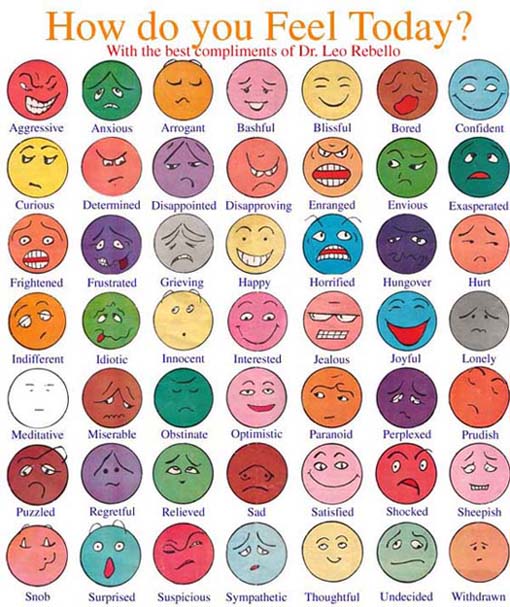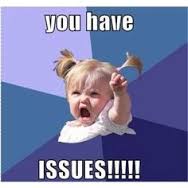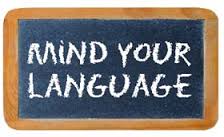Therapy Gems ©
Buzzwords Versus Meaningful Words
Buzzwords I: Common Buzzwords, Psychobabble, and Vague Jargon in Therapy
Version 1.1
LEARNING TO BE SPECIFIC AND DETAILED
One of my supervisors once told me, “Never ASSUME you know what the client means. Ask and analyze.”
As I was presenting the details of a case to another of my supervisors, he often would ask me to stop my presentation and to talk about the meaning to me of a client’s comment. He asked me to free associate to the comment. From those intense, lengthy explorations, I learned that if we teach ourselves to think deeply about each bit of client ‘material,’ we find the riches contained in every detail and anecdote. Every comment represents a depth of understanding of our client and our own reactions, all of which can help us to help the client.
I once attended a staffing led by the famous psychoanalyst, Karl Menninger. He stopped the presenter after each fact or sentence and invited the group of us therapists to bring out all the meanings we could think of for each fact or detail. Again, that was a lesson in the wealth of meaning in client communications.
Another influence upon me was the writings of the famous analyst, Theodore Reik, who wrote long, involved treatises exploring his thoughts which had been stimulated by a client’s single gesture or comment.
One of my supervisors, the co-founder of Solution Focused Brief Therapy, Insoo Berg, developed detailed future scenarios with her clients. Carl Rogers reflected specific  emotions, working to be accurate and empathic.
emotions, working to be accurate and empathic.
All of these supervisors and masters had a common message for our understanding of the client, namely, to achieve specific, detailed knowledge of the meaning of the client’s words and ideas, and to communicate with the client in specific language.
So we see that everything the client does communicates all of herself or himself. Psychotherapy works best when the client experiences the therapist’s empathy and understanding, which in turn requires a depth of understanding. We need a specificity of knowledge about the client and clear thinking about what each client uniquely presents.
Therefore, to repeat, never assume you know what the client means; ask, ask, and ask. Delve into the meaning.
ON BUZZWORDS
I mention these experiences precisely because I so often hear therapists not only fail in meeting this standard of specific, deep thinking, but almost going in the opposite direction. That is, I hear therapists use ambiguous, abstract buzzwords as if the words had a specific, conventional, consensual meaning. These buzzwords have different referents for different clients and families. So we can’t know exactly what the words mean to the client. We definitely can’t assume the client understands a buzzword when we use one of them ourselves.
And worse yet, when we as therapists use those words frequently, we can assume our message to the client is that we will not think deeply, and we will not ask the client to think deeply; we will not consistently probe the client’s experiences and connect them to his or her difficulties; we will condone moving to the surface of life experiences; and we will partially support the client’s dysfunctional defenses.
Buzzwords are imprecise words, purposely vague words. Therapists hear clients use these words, but they often do not find out their meaning to the client.
In contrast, jargon or argot means words with precise meanings which are esoteric, that is, known mainly to professionals in a specific discipline. Psychology has an argot of hundreds of jargon-words which help us define and describe what we are observing. Sometimes therapists use jargon with clients without explaining the meaning of the terms. That is also a problem.
Many buzzwords, such as “stress,” began as jargon, but have lost their specificity of meaning as they have passed into popular usage. Eventually, words such as stress acquire a vague or general popular meaning. Then therapists may use such words in their buzzword status rather than as professional jargon.
Some of the buzzwords are psychobabble, words which are pseudoscientific and always were, and which have an air of being plausible and useful. But in the end the words are a way of revealing almost nothing specific.
This paper is a compendium of common buzzwords. First, we’ll discuss clarification as a way to underscore the point that buzzwords may block effective care.
CLARIFICATION
The most used of all therapeutic tools is the technique of “clarification,” meaning asking probing questions with the aim of gaining a more in-depth understanding of the client’s cognitions, emotions, motivations, and actions, and those memories which shape behavior. We ask CLARIFYING questions which are different from what may be used in common conversation. We may ask, “What do you mean by that?” “Tell me more about it.” “What comes to mind about _____?” “When you think of that, what emotions go with that?” “When you remember that, what do you think or say about yourself?” “What emotions do you have now?” “When you stopped talking, what came to mind?” “Are you saying ______?”

CLARIFICATION gives depth and color to the client’s material.
The magnified anecdote shows us the details and truth in the story.
In common conversation, we may ask, “Why did you say that?” “What do you mean?” “Explain that.” As I think about those questions, they usually aim to promote a discourse or to challenge a point. In contrast to our motives in common conversation, therapy is not meant to be a back-and-forth discourse, to be persuasive, or defeat the client’s point. Clarification is meant to direct the client to self-understanding or to gather data about the client’s dysfunctional reaction patterns.
In contrast, buzzwords are not meant to clarify. They are more likely to obscure. We may intend to use words which are intentionally vague in order to soften a message. When we de-enervate the message in order to be less objectionable, we are not communicating clearly.
For example, let’s say the client has just said, “Two days ago, I was fired from my job for being late again, so I spent the next day in bed and didn’t have any motivation to move the entire day.” Then the therapist said, “That really stressed you out. You just didn’t know how to handle it.” The client answered, “It sure did. Right.” Where do we go now?
The use of the buzzwords “stressed out” and “handle it” obscured the possibility of significant meaning in the client’s statement. Let’s use CLARIFICATION instead of buzzwords. Let’s say the client has just said, “Two days ago, I was fired from my job for being late again, so I spent the next day in bed and didn’t have any motivation to move the entire day.” Then the therapist said, “First, let’s go over what happened with the firing and then what happened yesterday.” Cl: “When I got to the office to punch in, the HR Manager was right by the clock. She said I was late for the third time and that holds up the assembly line. ‘Violation of company policy.’ ‘You’re suspended for two weeks.’ I argued I was only 15 minutes late and there was traffic. She said, ‘You’re supposed to plan for that like everyone else.’ Under my breath, I called her a name. So she said, ‘That shows you just don’t get it, do you? Get your things and I’ll escort you out. You are fired.’ So I called her something nasty, kind of loudly, and she said, ‘That’s it! Leave the building, now, and we’ll mail your stuff to you.’”
When the therapist tries to empathize without CLARIFYING the story, he or she not only could be way off base, but could be condoning psychopathology. Plus, a marvelous learning opportunity has been missed. What riches are hidden in this story! What memories or attitudes regarding authority figures could have been discovered? Did the client use provocation as a response to feeling small and embarrassed or guilty or ashamed? Instead of mending his ways, he became defensive and challenging, behaviors which will not work in too many social situations and which have roots we can understand. What memories may have shaped his perception of the manager and his choice of defenses?

CLARIFICATION is essential in a variety of therapies. For instance, originally a method in psychoanalysis used to gather insights needed in order to make an INTERPRETATION, CLARIFICATION is used in cognitive therapy in order to extract the client’s automatic thoughts and dysfunctional beliefs from his or her experiences. In Solution Focused Brief Therapy, the therapists may seek to learn about an exception to the problem and then use clarifying questions in order to develop the story in detail. Clarification is used in counseling generally in order to get a clearer sense of the client’s emotions. Buzzwords and psychobabble fail to help clarify and, therefore, fail to lead to a rich understanding.
COMMON BUZZWORDS
Some of the most common such buzzwords used in therapy include these:
Act out, acting out – It is used to mean hostile behavior, including hostile words and tantrums. This has little to do with the precise meaning of the term. Acting out is a psychological defense in which the client expresses a conflict in action rather than in words. Acting out is an unconscious process, not necessarily connected with aggression. It is not a label for the manifest behavior, nor is it limited to aggression. Therapists should avoid the incorrect usage of this term and should rather describe the behavior of the client specifically. If the person is talking back or swearing, say the person is confrontational, talking back, defiant, swearing, or what have you. Calling it all “acting out” obscures the meaning and, besides, it is being used in a pejorative, often dismissive way. For example, I recently received a call from a TV reporter asking me to comment on what parents can “to help their acting out children.” This statement could have a variety of meanings. It turns out he meant what can parents do to help children who often act aggressively as a result of a mental disorder. By helping him ask a more specific question, I had the specificity needed to answer the question.
In another example, a 14 year-old with an Attachment Disorder kicked his mother when he felt criticized. He could not articulate how criticisms feel like statements that he is unlovable and cannot be kept, that he will be abandoned. So his kicking rejects the statement, rejects to author of so painful and hurtful a statement, and demonstrates his inner hurt. It gets back at the person who threatened his existence. If we mean he “acted out” his feelings in the sense of expressing all those reactions through kicking, that is close to the meaning of the term. If we use it only to refer to kicking as hostile behavior, that is using the term as a buzzword. The former shows insight and attunement, the latter does not.
Take, for example, a 10 year-old girl with an Attachment Disorder whose first action was to walk briskly into the consulting room and, after the therapist sat down at the desk, to come up close enough to touch her hip against the therapist’s arm, and to say, “You’re my new therapist forever. What will be doing on that computer?” This is acting out – she was showing through action her rapid, indiscriminate, superficial connecting with another. But this was approach behavior, not hostile action. The example shows further that “acting out” should not be used merely as a term for aggressive behavior.
Anal – It is used to mean overly organized or retentive (holding on to items which may not be useful) or retentive of feelings and thoughts. This usage bears little resemblance to the psychological meaning of psychosexual impulses and behaviors characteristic of the second year of life. It is almost always meant in a critical way.
Attention – This is almost always used pejoratively for a motive for behavior, namely, to be paid attention to for attention’s sake. Attention-seeking is used to mean the attribution of a negative, almost frivolous or invalid motive for a person’s behavior, that is, to have someone notice.

This superficial view of behavior obscures the deeper need behind the behavior – love, connection, approval, attachment.
It is shockingly dismissive of the truth of the client’s behavior. I heard this term from a mother in a session as she dismissed her daughter’s feelings of being cast aside when the mother remarried, “Oh, she just wants attention.” Not an hour later, I heard the term used by a mother on a TV mystery show as she chose to dismiss her daughter’s allegation of sexual abuse against a family member as “Nothing but wanting attention.” Yet “attention” refers to necessary and normal interaction with important figures in one’s life, interactions which support sense-of-self and which provide essential positive reinforcement. Saying a child is attention-seeking actually misdirects us from probing into understanding the child’s legitimate needs. It implies the family should repudiate and reject the behavior rather than understanding the child’s needs and motives. Therapists are supposed to use empathy and understanding, not dismissiveness, as a tool for change. It can be heart-breaking when a therapist lets this usage go or, worse, uses it herself or himself, such that a child’s bid for her mother’s love or an act expressing a  need to be understood or validated is treated as nothing at all, merely, seeking attention. Don’t we all need to be attended to? What is the deeper need the client is showing?
need to be understood or validated is treated as nothing at all, merely, seeking attention. Don’t we all need to be attended to? What is the deeper need the client is showing?
Attitude – This term is used to mean disagreeable behavior, talking back, or non-compliance. But which is it? It has become a vague global reference. In psychology, an attitude is a disposition toward some object or situation, that is, a belief and an emotion about something. Attitude tells us how someone thinks and feels about a thing. That is an entirely neutral term. The term should not be used to mean only a negative judgment of a person. When someone is described as having a “bad attitude,” the therapist should learn the detailed meaning of that statement. What did the person do? What about it is “bad?” “What behavior would be preferred?” “What will happen differently when that preferred behavior occurs?” The use of the term attitude to mean negative behavior should never go unexamined.
Can’t stand it – This is a vague statement of a strong negative reaction to an event or situation, a reaction which taxes a person. But this phrase avoids speaking to the actual emotions being experienced. Are they sadness, pain, anger, hurt, exhaustion, disappointment, disapproval, emptiness, resentment, loss, aloneness, frustration, irritation, etc.? Are they reminiscent of an unresolved past experience? Clinicians should ask what the client means when using this term.
Closure – Closure is used to mean a sense of being over an unpleasant experience in a way the person considers an acceptable way to complete or to ‘resolve’ that experience. But the word covers up the process and mental work needed to attain that emotional outcome, namely a reduction in emotional response and emotional conflict regarding an experience. Seeking closure is actually a fantasy of how one hopes to feel given some psychological process by which the complex of thoughts and feelings attached to some event or person will be transformed. Again, ask the client what is meant by it and how to know when it is achieved.
Closure is an end result. But what is the process? For therapy, the word ‘RESOLUTION’ is a better jargon term with the following referents.
- Memories of the experience cause no significant distress or impairment.
- The person is relatively comfortable talking about it.
- The memories are experienced as part of history, as something from the past, rather than as something vividly and emotionally present.
- The person conceptualizes the event narrative with language suggesting mastery, survival, forgiveness, successful coping, personal effectiveness, or pulling through.
So when the therapist refers to an experience as resolved or unresolved, he or she has in mind specific elements and, in the latter case, techniques to help move towards resolution.
Dealt with, deal with – This is used to mean coped, worked through, or processed. “I can deal with it” may be true, i.e., the person can think about it without impairment, or an untrue statement meant to discourage discussion of the event or memory or situation. “I can’t deal with” is ambiguous, suggesting feeling overwhelmed, easily upset, unable to accept. What does it mean to “deal with” something psychologically? Talk about it? Think about it? Confront someone? Come to a new understanding? Stand up to the situation? Cope effectively? Assert feelings? Feel at peace? The therapist should be looking at the process and not accept vague language. For example, if the therapist said, “You dealt with that effectively,” the therapist wasted an opportunity to reinforce a specific skill or coping strategy. It would be better to highlight and reinforce the new skills, saying, “You showed restraint, tact, and thoughtfulness when you spoke with Johnny and tuned into his state of mind empathically. Think how far you have come from when you used to scold him for this behavior and that didn’t work. But now you suppressed that urge and really worked to understand his feelings and it helped tremendously.” So “deal with it” is not an expression a therapist ought to use.
“Deal with” is also used in another way, saying “I can’t deal with that.” What does it mean? Tolerate? Face the emotions? Feel overwhelmed? I have heard therapists say something from a class of possible statements such as, “You didn’t deal with the feelings from your divorce.” What does it mean? Anything from “You have felt depressed over the sense of loss” on one side to “You have been resentful over how it ended and you’ve been acting hostile and obstructive as a result.” The escape from specificity in using a buzzword such as “deal with” is virtually anti-therapeutic.
specificity in using a buzzword such as “deal with” is virtually anti-therapeutic.
Empower – The term is used loosely to mean to support client autonomy, assertiveness, and self-determination; but generally we see the usage narrowed to encouraging the client to make a decision or take an action. E.g., “I empowered her to stand up for herself.” Now there is one vague and illogical, but all too common, statement. Furthermore, by focusing on one action, the therapist has contradicted the very possibilities of the term itself – namely, the possibility of becoming empowered as a person, that is, autonomous and self-determining. She is taking credit, which is anti-empowering.
The term derives from social, political, and economic processes which help groups of people gain control over their lives in the political arena by acting on the positions in which they believe, specifically, acting against a prevailing power structure. If the therapist means to engage the client to make decisions and follow through, such as to overcome dependency or to develop identity or to use assertiveness skills, then say just what the client does. To use the word ‘empower’ is to use much more vague language which focuses on the therapist’s actions and not upon the client’s demonstration of competencies which can be reinforced.
In a sense, one can’t really empower someone! The client is demonstrating personal power. If the power is only given or permitted (by the one empowering), then it’s not true personal power. So when therapists say they empower the client, they would be advised to describe their intervention in more psychological terms, such as ‘used assertiveness training’ or ‘helped the client lay out pros and cons’ or ‘highlighted the expression of personal authority’ or ‘the client used assertiveness skills such as non-reactively stating her bottom line position.’
Feel – “Feel” is too often misused to mean opinion or attitude rather than emotion. One should be clear whether she is asking “What is your emotional reaction to that?” or “What thoughts or opinions do you have about that?” When the client talks about a reaction, be clear whether the person has articulated an emotion or an opinion or a judgment. Has the client given an affect or his/her theory of the situation? If we accept the vague use of “feel,” we have not asked the client to probe the self first, to come up with an accurate ‘theory’ based upon exploration of the facts and details of his or her reactions and emotions. When the client responds to a question of feeling by giving an opinion, the therapist might say, ‘Oh, that is your opinion about it, but what did you feel, your emotions?” “You are giving your notion of why that happened, but first let’s get all the thoughts and emotions out and come to an understanding of what it means for you.” “ You are coming up with your judgment of the situation before we have explored your emotions and the meaning of it. Let’s hold off on that judgment and explore it first.” This is a message about the level of specificity required in effective therapy. One of the most common statements in a therapy session is “What do you feel about that?” Unless we have taught the client that we mean “What are the emotions you have in reaction to that?” then the answer is just as likely to be an opinion as an emotion. If we are looking for an emotion or an opinion, we need to be clear which it is that we seek.
Fight – For therapy, fight is a word which could mean difference of opinion, disagreement, argument, quarrel, or some kind of violence. Its meaning must be exactly specified. Using a word which better conveys the severity and intensity of the situation will help the client better differentiate amongst levels of conflict. Many clients overstate a disagreement by calling it a fight. Others understate violence by calling it a fight. To me, a fight means an upsetting, vociferous, non-violent conflict in which hostile, critical words are expressed. An argument is a step down. Hitting or pushing is a step up in severity. A therapist who finds out the details of the event and labels the event correctly is better positioning the participants to understand the dynamics and learn to change.
Handle it, can’t handle it – [Also look to the paragraph about “deal with” above.] There are used to mean a capacity or incapacity to face a difficult situation. By what means does or did the client work through feelings about a situation? What coping or defense mechanisms are employed? What cognitive beliefs? “I handled it” does not tell us the strengths used. “I can’t handle it” does not tell us the emotions experienced. The command, “Handle it” and the similar phrase “Get over it” completely underestimate the psychological work which needs to be done and how it is done. How can we help encourage successful coping if we do not specify the skills to use and put them into language?
Issue – When I hear the word, “Issue” used in a statement in therapy or in a case conference or even when a therapist is referring to her own internal challenges, I hear  the person intentionally softening the statement and presenting an intentionally vague picture. This word “issue” has multiple meanings, such as, an unsolved problem, a difference of opinion, neurotic thinking, etc. It is often used to mean a statement which disagrees with another person or confronts the other person, as in “I have an issue with what you said.” “You have issues.” Better would be to say “I disagree” or “I disagree with what you are thinking” or “I am concerned with your thinking on that subject.” The word ‘issue’ ends up being critical and accusatory, while being meant purposely to be vague. “I have an issue with that” merely means I disagree. “You have an issue” means questioning the other’s position or thinking. It
the person intentionally softening the statement and presenting an intentionally vague picture. This word “issue” has multiple meanings, such as, an unsolved problem, a difference of opinion, neurotic thinking, etc. It is often used to mean a statement which disagrees with another person or confronts the other person, as in “I have an issue with what you said.” “You have issues.” Better would be to say “I disagree” or “I disagree with what you are thinking” or “I am concerned with your thinking on that subject.” The word ‘issue’ ends up being critical and accusatory, while being meant purposely to be vague. “I have an issue with that” merely means I disagree. “You have an issue” means questioning the other’s position or thinking. It is also meant to mean “You seem irrational or disturbed.” If the word is meant to be critical, it leaves the recipient with no clarity about what to do, what the objection may be, or what changes may be desirable. Like “Handle it,” “You have issues” is yet another term which glibly implies the person should repudiate some thoughts, behavior, or opinion. Clinicians know that changing is more complex a process than that!
is also meant to mean “You seem irrational or disturbed.” If the word is meant to be critical, it leaves the recipient with no clarity about what to do, what the objection may be, or what changes may be desirable. Like “Handle it,” “You have issues” is yet another term which glibly implies the person should repudiate some thoughts, behavior, or opinion. Clinicians know that changing is more complex a process than that!
Let go, letting go – This is used to signify ending of responding to a loss or a painful experience or dashed hopes, disappointments, and expectations. This is especially vague as it does not address how the person is to accomplish resolving the experience and what the outcome of that process may be. Is it a process of mourning? Adjusting expectations? What are the emotions the person must work through? What does it mean to say “I let go of that.” It also violates normal processes of grief – it takes time and psychological work to recover; one cannot “let go.” So as with some other buzzwords, it is dismissive. Find out about the client’s emotional experiencing.
Listen – In today’s parenthood, “listen” is almost always used to mean comply or obey rather than to hear. If compliance is intended, the therapist will be more effective if words such as comply or obey are used. Furthermore, the word ‘hear’ might be meant when we communicate with someone with ADHD or a teen fiddling with a smart phone or hiding under a jacket. Or perhaps both hear and obey are meant. Get it straight.
Move on – Similar to “let go,” this term is used to mean leaving behind a conflictual or unpleasant situation or an injury. But the term obscures the underlying process, the emotions involved, the reasons the event was troubling.
 Overreacting – This is mainly a critical term meaning to respond with excessive drama, emotion, or display. Saying someone is overreacting dismisses what the person is trying to express. Perhaps drama is the person’s way of showing the event had a major impact. Perhaps the person doesn’t expect to be heard or understood otherwise. Or perhaps the reaction is based upon catastrophic beliefs or the reawakened memory of an old hurt. Clinicians should find out what is behind the reaction.
Overreacting – This is mainly a critical term meaning to respond with excessive drama, emotion, or display. Saying someone is overreacting dismisses what the person is trying to express. Perhaps drama is the person’s way of showing the event had a major impact. Perhaps the person doesn’t expect to be heard or understood otherwise. Or perhaps the reaction is based upon catastrophic beliefs or the reawakened memory of an old hurt. Clinicians should find out what is behind the reaction.
Process, Processed – “Process” has two meanings. 1) When used as a verb, it means discussed, reviewed, or talked about. I think therapists use this to mean something much more, namely, coming to the point of understanding or insight, then working it through. [See the discussion of “closure” above.] The psychological processes involved are much richer than the term “process” implies. It would be more helpful to spell out the psychological work which has taken place.
2) ‘Process’ can also mean a sequence of interactions in a session, each one stimulating the next, displaying the client’s patterns. This is jargon which has a useful meaning in a case conference, but little meaning in therapy. “Your interaction” or “The way each reaction followed from the one before” would have more meaning for the client.
Respect – Generally this is used to mean follow directives, complying, speaking courteously to another. But the meaning is idiosyncratic; each person using the term means something different. One should always make sure to know what the client means by the term and the therapist should not use ‘respect,’ but should use that more specific meaning. Asking a child to “respect” a parent would give the child no map as to the desired behaviors — compliance, obedience, fear, mutuality, thoughtfulness, valuing, validating. Furthermore, the range of behaviors could be so broad that the child would have difficulty approximating what is expected. The same problem occurs quite frequently in couples counseling. “You don’t respect me” is more a statement of feeling and judgment and not much of a guide to improvement. The meaning could be an indictment of the partner as ego centric, a statement about feeling dismissed, a statement about feeling alone and not valued or not appreciated, or any number of others meanings. Therapists should be getting a specific list of the meanings behind such a statement and of the desired behaviors.
Shut down – This term is used both to mean the client is not talking or the client is not sharing emotions. It could also mean having no feelings. The term has absolutely no psychological meaning or utility. Rather, the therapist should refer to the process  behind the observation, namely, constriction, flattening of emotion, numbing, inhibition, resistance, suppression, blocking, anxiety, repression, etc. ‘Shut down’ is a way of characterizing the behavior in vague terms which does not permit us to know the underlying process. If a client is told he is shutting down, what is he supposed to do with that?
behind the observation, namely, constriction, flattening of emotion, numbing, inhibition, resistance, suppression, blocking, anxiety, repression, etc. ‘Shut down’ is a way of characterizing the behavior in vague terms which does not permit us to know the underlying process. If a client is told he is shutting down, what is he supposed to do with that?
Space, as in “I need more space.” – Also, “I feel smothered [engulfed].” This is not a term therapists are likely to use, but it is one they will hear. What could this mean? I want to break up? I am not comfortable with you? We are becoming close more quickly than I can trust? I have avoidant attachment style, so increasing closeness makes me anxious? I feel my independence is compromised? I have made plans to separate? I don’t want an exclusive relationship? You are too demanding? When this phrase comes up, it is important to clarify the meaning.
Stress, stressed out – This term has an indeterminate meaning, but could refer to one’s reaction to a change or a group of events. It could just be used to mean a pile up of challenges and difficult things to do. Does it mean pressure, press of events, having too much to do, or deadlines? The term “stress” as defined by Hans Selye, who introduced it to medicine, has a scientific meaning in psychology of demand for adaptation which elicits adrenal hormones and causes wear and tear on the body. “Stressor” is the proper term for external events. Stress is about the body; stressor is about the environment. Any other use makes the terminology vague and unclear. Rather than use “stressed,” it is more helpful to refer to the underlying events and to explore the client’s reactions. “When you say you are stressed, let’s look at what events make you feel that way and just thoughts and feelings they stir up.” Rather than reflect “You are so stressed,” better would be “Having to react to a loss and then to financial troubles leaves you scared and interrupts your sleep. You seem to be blaming yourself, and those thoughts make you depressed.” You can see that getting away from the buzzword leads to more possibilities, such as exploring automatic thoughts, interpreting the defense of turning against self, or reviewing the entire process around the client’s reaction to the loss.
The term “stress” as defined by Hans Selye, who introduced it to medicine, has a scientific meaning in psychology of demand for adaptation which elicits adrenal hormones and causes wear and tear on the body. “Stressor” is the proper term for external events. Stress is about the body; stressor is about the environment. Any other use makes the terminology vague and unclear. Rather than use “stressed,” it is more helpful to refer to the underlying events and to explore the client’s reactions. “When you say you are stressed, let’s look at what events make you feel that way and just thoughts and feelings they stir up.” Rather than reflect “You are so stressed,” better would be “Having to react to a loss and then to financial troubles leaves you scared and interrupts your sleep. You seem to be blaming yourself, and those thoughts make you depressed.” You can see that getting away from the buzzword leads to more possibilities, such as exploring automatic thoughts, interpreting the defense of turning against self, or reviewing the entire process around the client’s reaction to the loss.
Support – This term is so broadly used that I’m not sure of the meaning of the usage! Some people use it to mean agreement or backing the person up on what they believe and do. The broadest meaning is encouragement. Most often it is used to criticize what someone else is or is not doing to agree with, accept, or encourage one. Again, it is important to ask what the user of this term means by it and then not to use it in therapy. The therapist uses terms which get at the specifics, such as, “So you think you are being criticized and you feel disappointed. You were hoping to have your idea encouraged rather than critiqued.”
CONCLUSION
In conclusion, “Never ASSUME you know what the client means. Ask and analyze.”
We can add that when a client uses a buzzword, never assume you understand what the client means. It could be an unconscious attempt to be vague or is overtly dismissive. It could have a referent for the client which is not shared in the therapist’s mind.
Probe for the meaning. Don’t let it go by.
Furthermore, never use a buzzword with a client or about a client. It shows a lack of incisive professional thinking. That is counter-productive because it condones the client being imprecise as well and it supports avoidance, which then supports the client’s problems.
Lastly, besides the disservice done to the therapy and the client by using buzzwords and not asking for elaboration, the use of buzzwords does a significant disservice to the therapist as well. It prevents the therapist from developing, that is, from learning some of the hallmarks of good clinical work, such as
- how to describe the dynamics of the client’s behavior
- how to delve more deeply into a client’s emotions, cognitions, and memories (clarification)
- how to perceive and describe deeper patterns (insight)
- how to explain the thinking behind our choice of interventions
- how to think incisively and with due complexity about therapy.
If you find a buzzword escaping your tongue before you can catch it, correct it. For example, “How did you handle that?” [Oops] “What was your thinking and feeling then?” Or “What did you do then? “ Or “What were your responses to that?”
For another example, “You say you are stressed out. That means different things to different people. So let’s make sure we fully understand how it is for you. What is it like for you?” Or, “What feelings make you say that?”
For another example, “So you say you want him to show respect. Let’s make it crystal clear what that means to you, what he will be doing that you are looking for and can appreciate.” Follow up with, “What are the ways you will know it?” and then also “Ok, then also what behavior would you like to see less of?
We guide people to understanding how the assumptions behind their thinking can be examined, challenged, and changed. We guide people to understanding how past experiences shape their reactions so they can change. All this requires specificity and a detailed understanding of the individual. Our tool is language and we use it to communicate. So let’s not obfuscate the meaning; rather, let’s be clear, incisive, thorough, and detailed in our understanding. Never assume you know what the client means; ask, ask, ask. Never assume the client knows what you mean; explain, explain, explain in clear language.

************************
© Don D Rosenberg, Version 1.0 2012, Version 1.1 2017